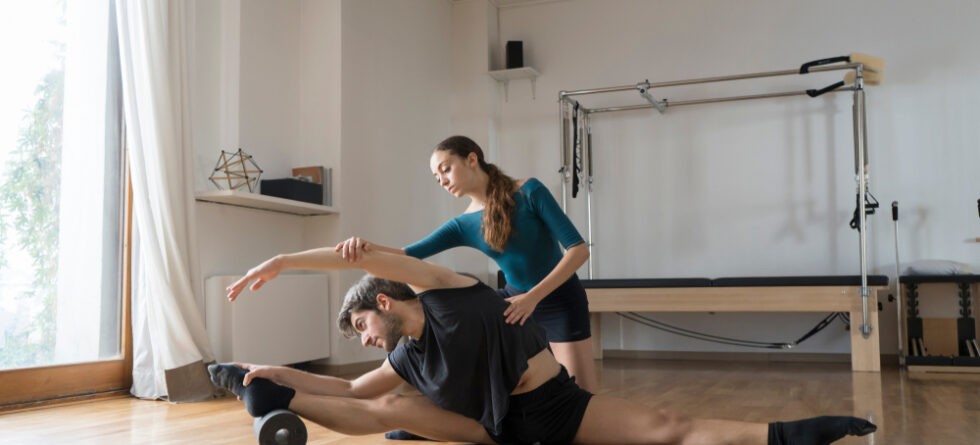Strengthening fascia isn’t quite like strengthening muscles because fascia is primarily a connective tissue that provides structural support and stability to the body rather than contracting and relaxing like muscles do. However, there are ways to promote the health and integrity of fascia, which can contribute to overall strength, flexibility, and mobility.
Here are some strategies…
- Myofascial Release Techniques – Myofascial release techniques such as foam rolling, massage therapy, and using specialized tools like foam rollers, massage balls, or foam blocks can help release tension and adhesions in the fascia. By applying pressure to tight or restricted areas, you can help improve blood flow, reduce stiffness, and enhance flexibility.
- Dynamic Movement – Engaging in dynamic movement patterns that involve stretching, twisting, and bending can help promote flexibility and mobility in the fascia. Activities such as yoga, Pilates, tai chi, and dance can all be beneficial for maintaining healthy fascia.
- Strength Training – While fascia itself doesn’t contract like muscles, strength training exercises that target the muscles can indirectly benefit the fascia by promoting overall strength and stability in the body. Compound exercises such as squats, lunges, deadlifts, rows, and presses engage multiple muscle groups and stimulate the fascia, helping to maintain its integrity.
- Hydration and Nutrition – Staying hydrated and consuming a balanced diet rich in nutrients can support the health of the fascia. Collagen, in particular, is a protein found in connective tissues like fascia, and consuming collagen-rich foods or supplements may help support fascial health.
- Proper Posture and Movement Patterns – Maintaining good posture and practicing proper movement mechanics can help prevent strain and dysfunction in the fascia. Pay attention to your body alignment during daily activities and exercise, and avoid repetitive movements or positions that may contribute to fascial restrictions.
- Mind-Body Practices – Practices such as mindfulness, meditation, and deep breathing can help reduce stress and tension throughout the body, including in the fascia. Stress and tension can contribute to fascial restrictions, so finding ways to relax and unwind can be beneficial for fascial health.
- Gradual Progression – When incorporating new activities or exercises into your routine, gradually increase intensity and duration to avoid overloading the fascia and risking injury. Listen to your body and pay attention to any signs of discomfort or strain.
By incorporating these strategies into your routine, you can help support the health and integrity of your fascia, promoting overall strength, flexibility, and mobility. However, it’s important to note that fascia is a complex and dynamic tissue, and individual responses to these approaches may vary. If you have specific concerns or injuries related to fascia, consult with a qualified healthcare professional for personalized guidance and recommendations.




